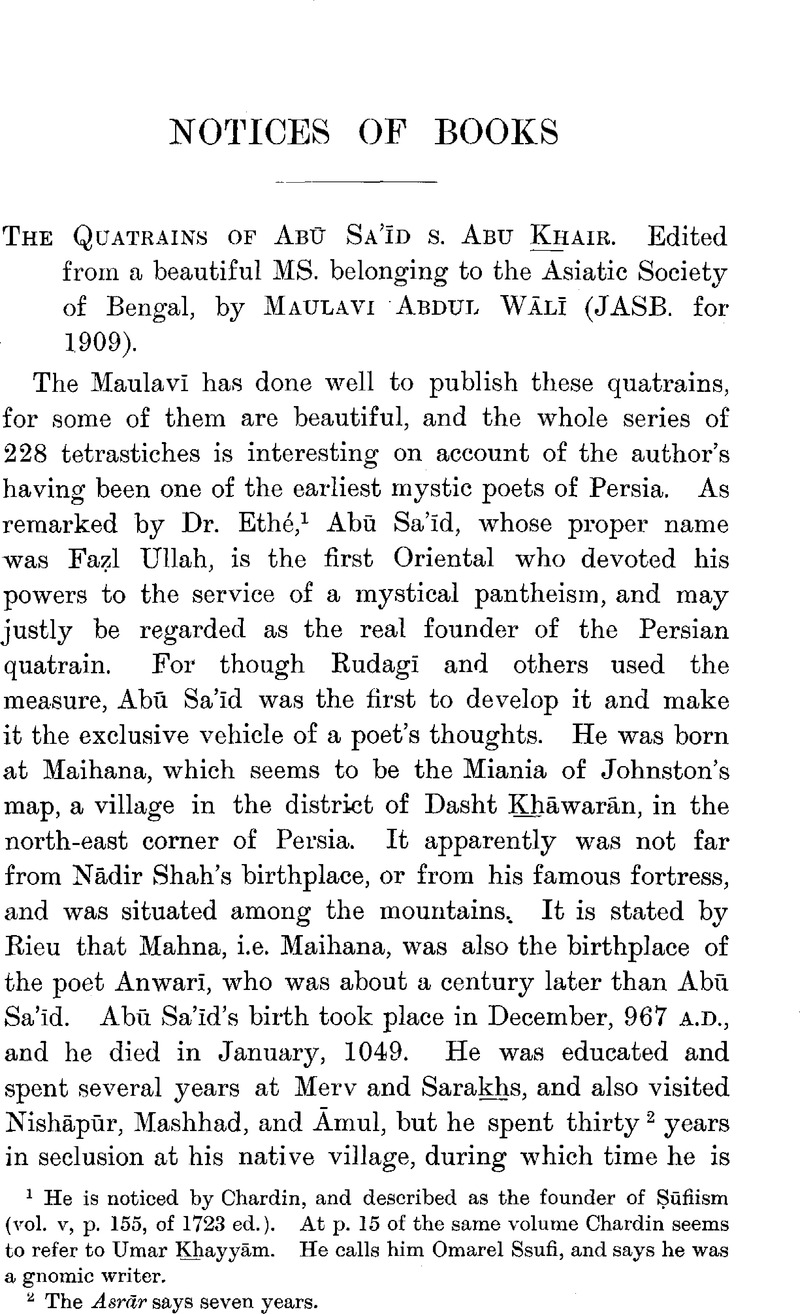No CrossRef data available.
Article contents
The Quatrains of Abū Sa'īd s. Abu Khair. Edited from a beautiful MS. belonging to the Asiatic Society of Bengal, by Maulavi Abdul Wālī (JASB. for 1909).
Published online by Cambridge University Press: 15 March 2011
Abstract

- Type
- Notices of Books
- Information
- Copyright
- Copyright © The Royal Asiatic Society 1911
References
page 827 note 1 He is noticed by Chardin, and described as the founder of Ṣūfiism (vol. v, p. 155, of 1723 ed.). At p. 15 of the same volume Chardin seems to refer to Umar Khayyām. He calls him Omarel Ssufi, and says he was a gnomic writer.
page 827 note 2 The Asrār says seven years.
page 828 note 1 Asrār, pp. 443 et seq.
page 828 note 2 The word is najahī, ![]() The Asrār, p. 373, of Zhukovsky's ed., has naranjī,
The Asrār, p. 373, of Zhukovsky's ed., has naranjī, ![]() “do not grieve,” but there is the variant najahī.
“do not grieve,” but there is the variant najahī.
page 832 note 1 See also DrEthé's, article on “The Mystic and Didactic Poetry of Persia” in Geiger, & Kuhn's, Grundriss der Iranischen Philologie, vol. ii, p. 273Google Scholar.
page 834 note 1 The story is also told in the Ḥālāt, p. 68, and at p. 65 ibid, there is given a letter of Abu Sa'īd's to Avicenna.
page 836 note 1 This story is also told, with some unimportant variations, by Farīdu-d-dīn 'A![]() ār; see Nicholson's edition, ii, 333.
ār; see Nicholson's edition, ii, 333.


